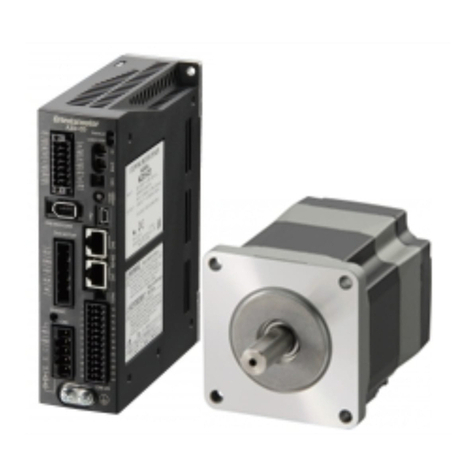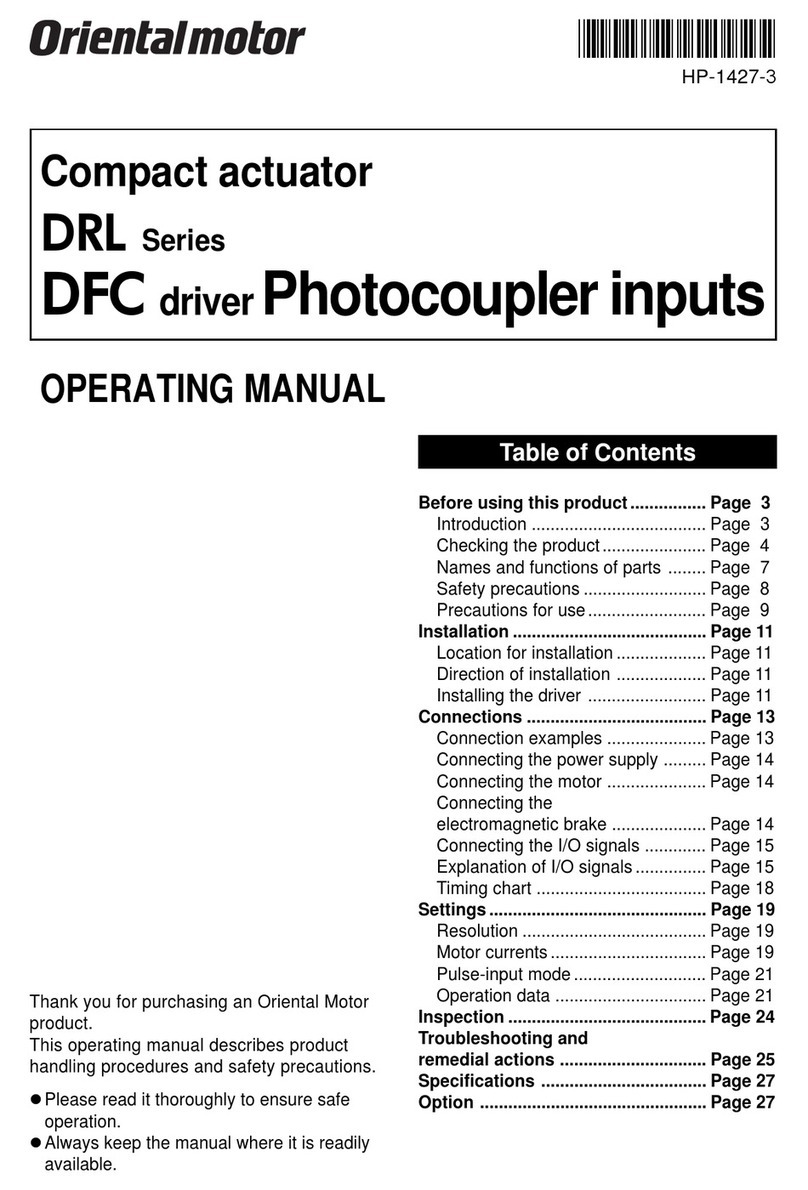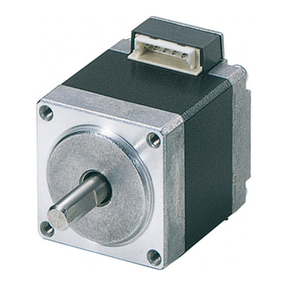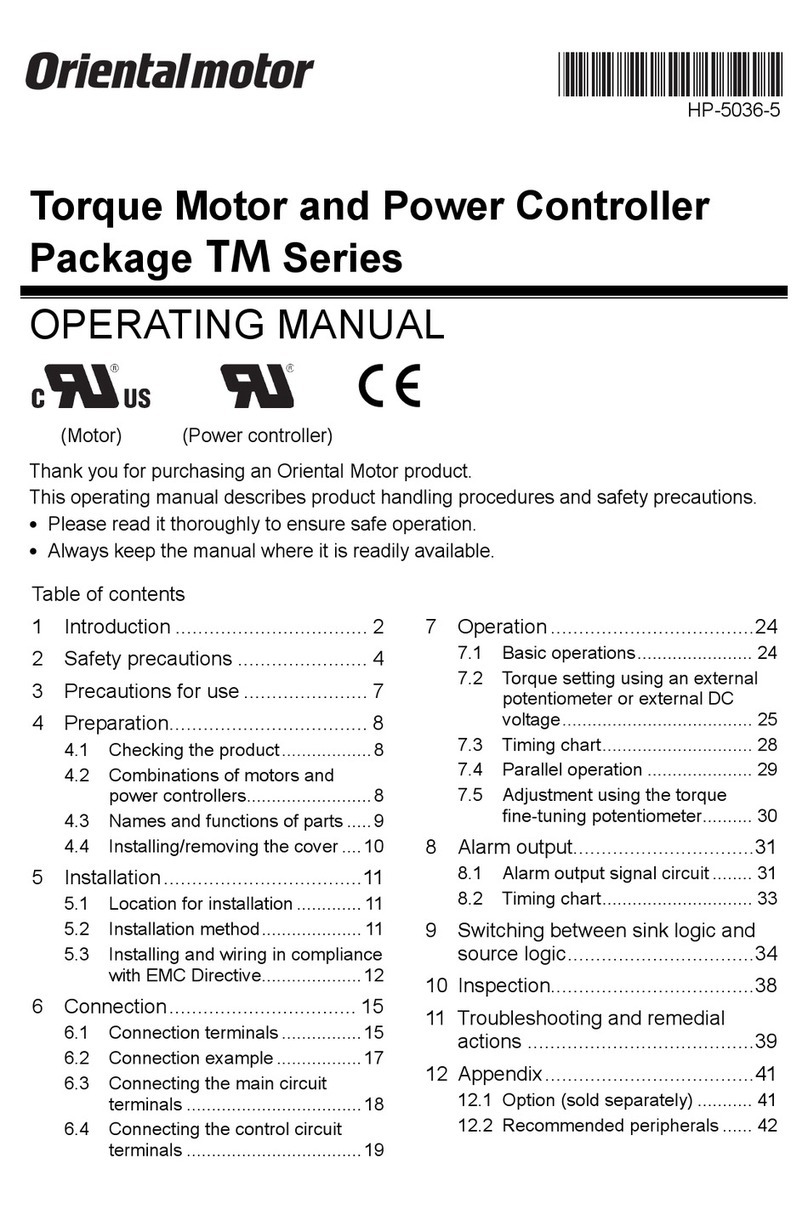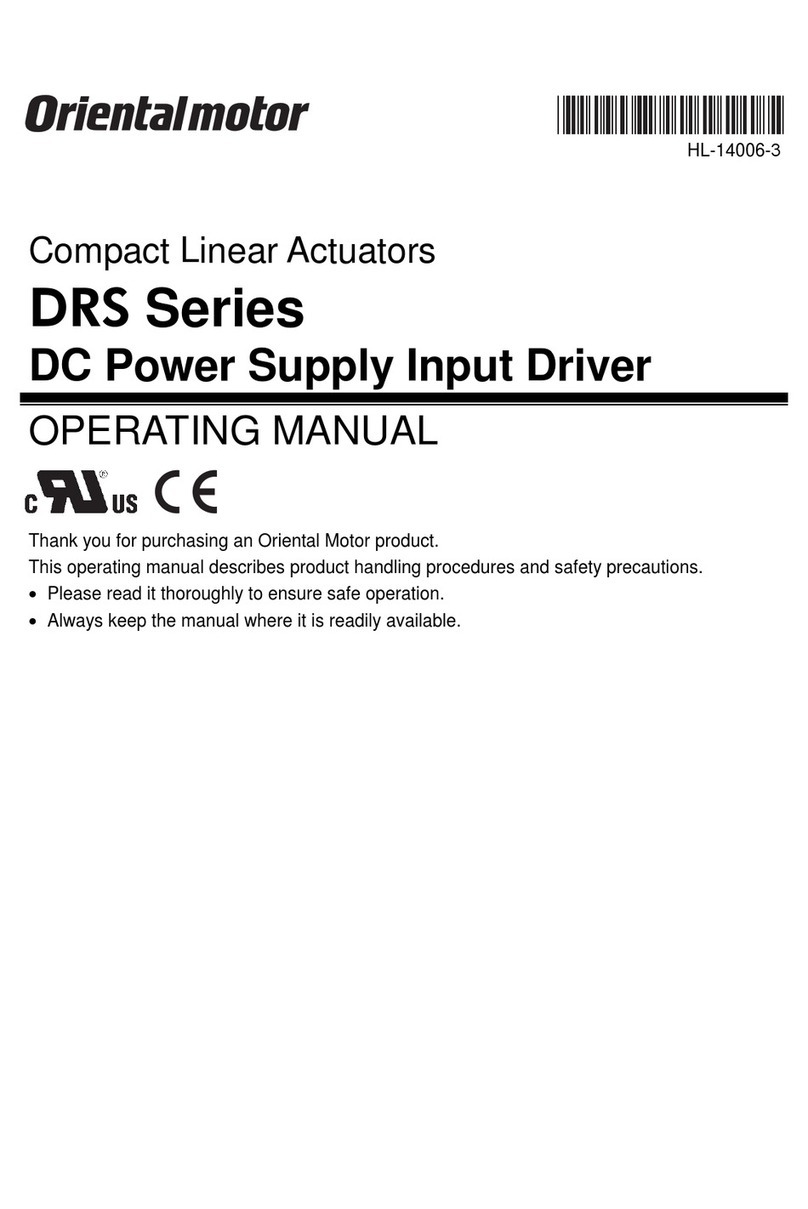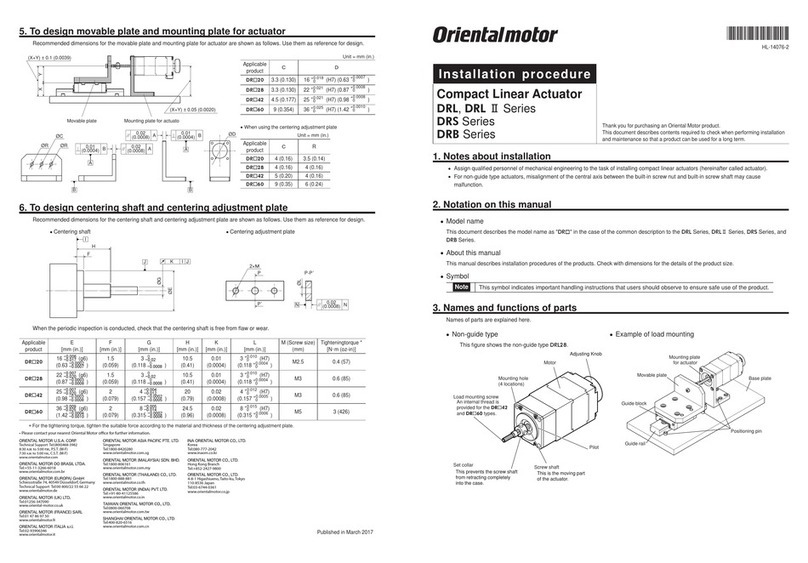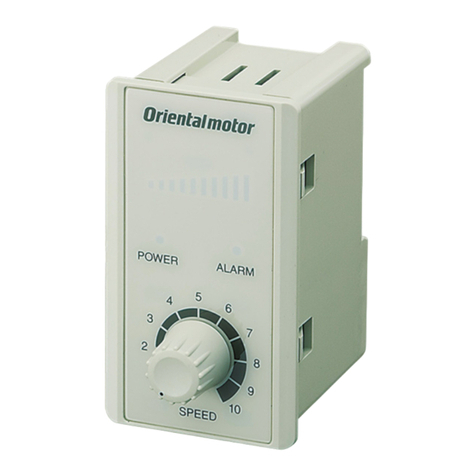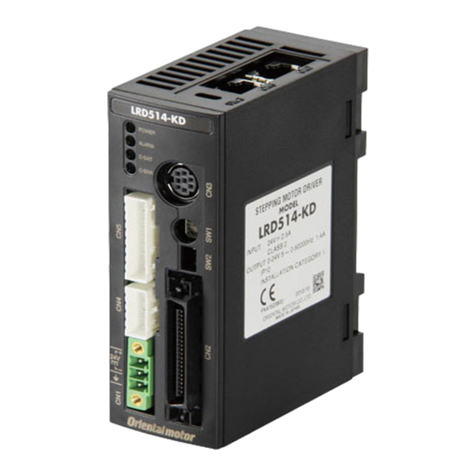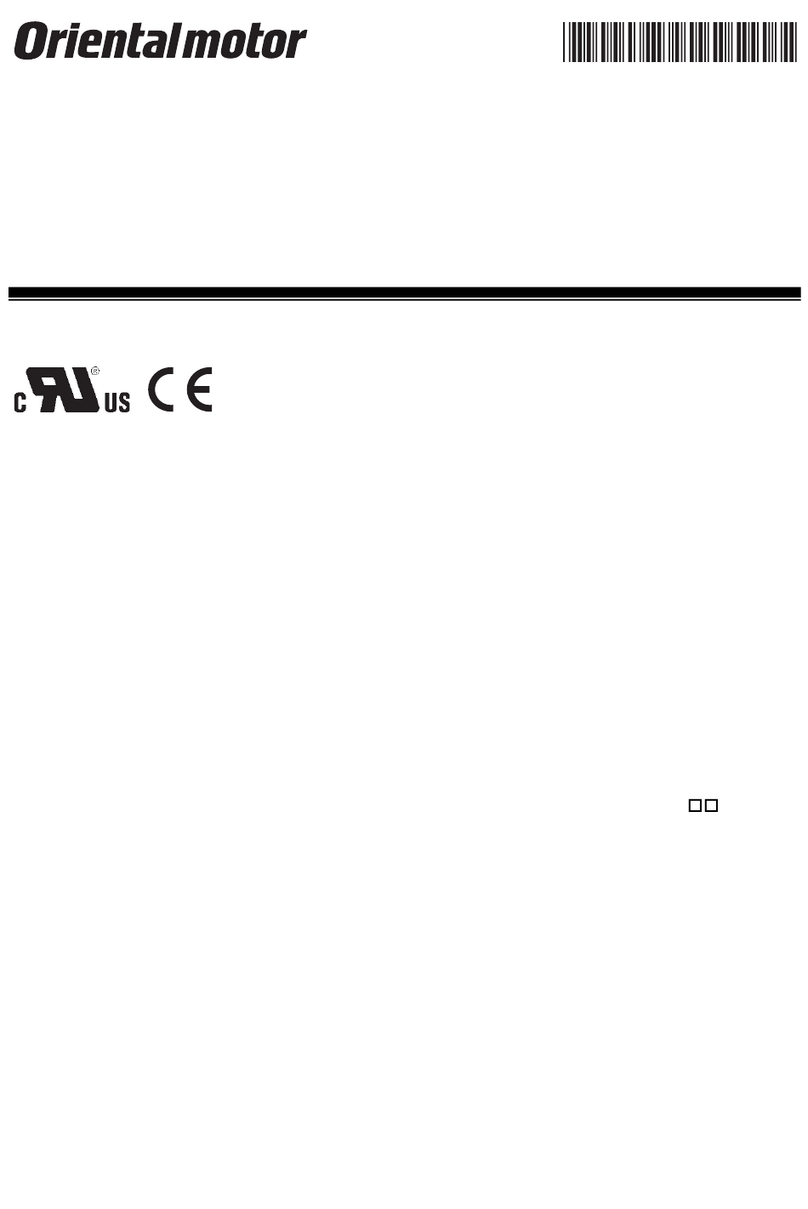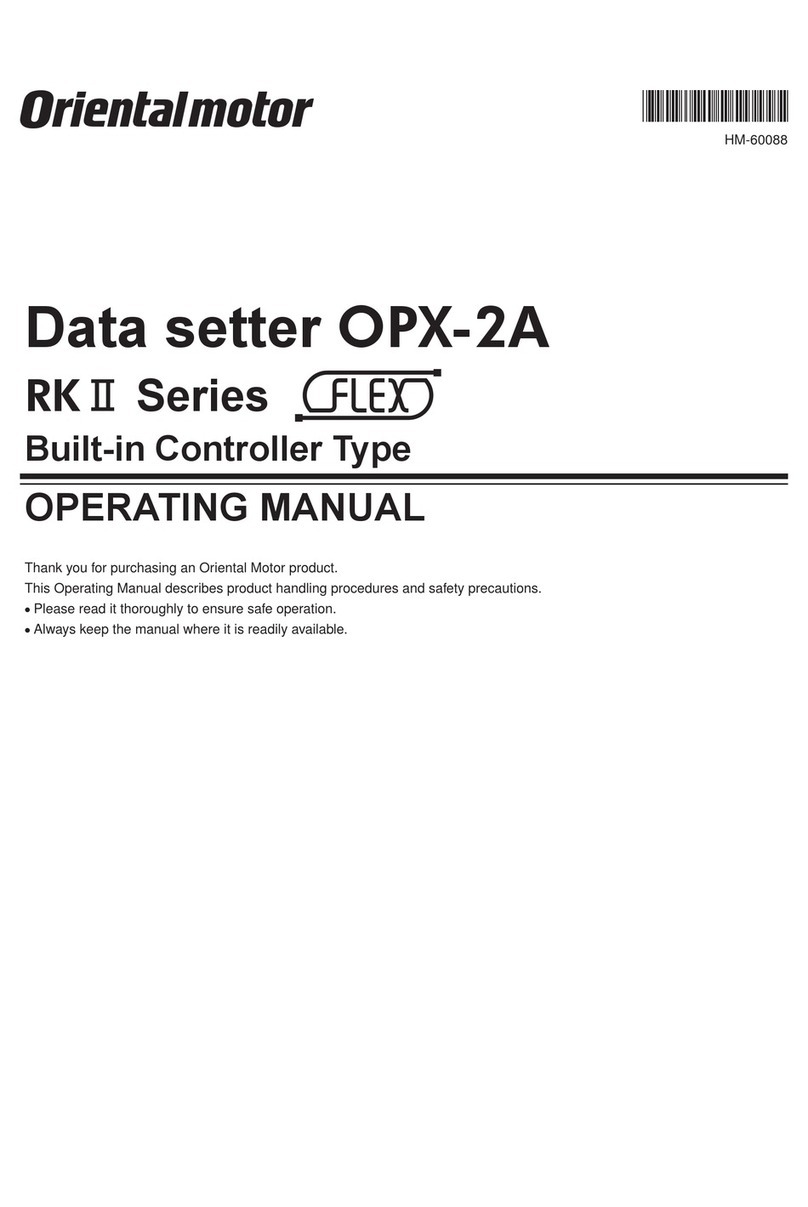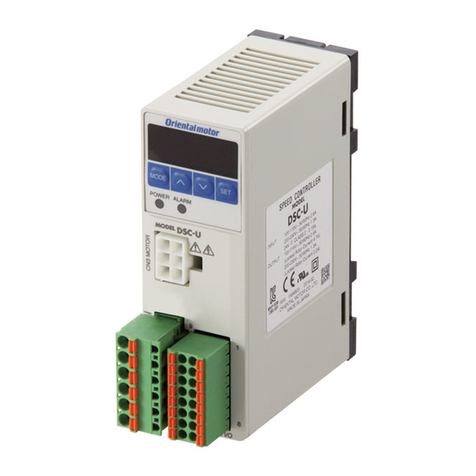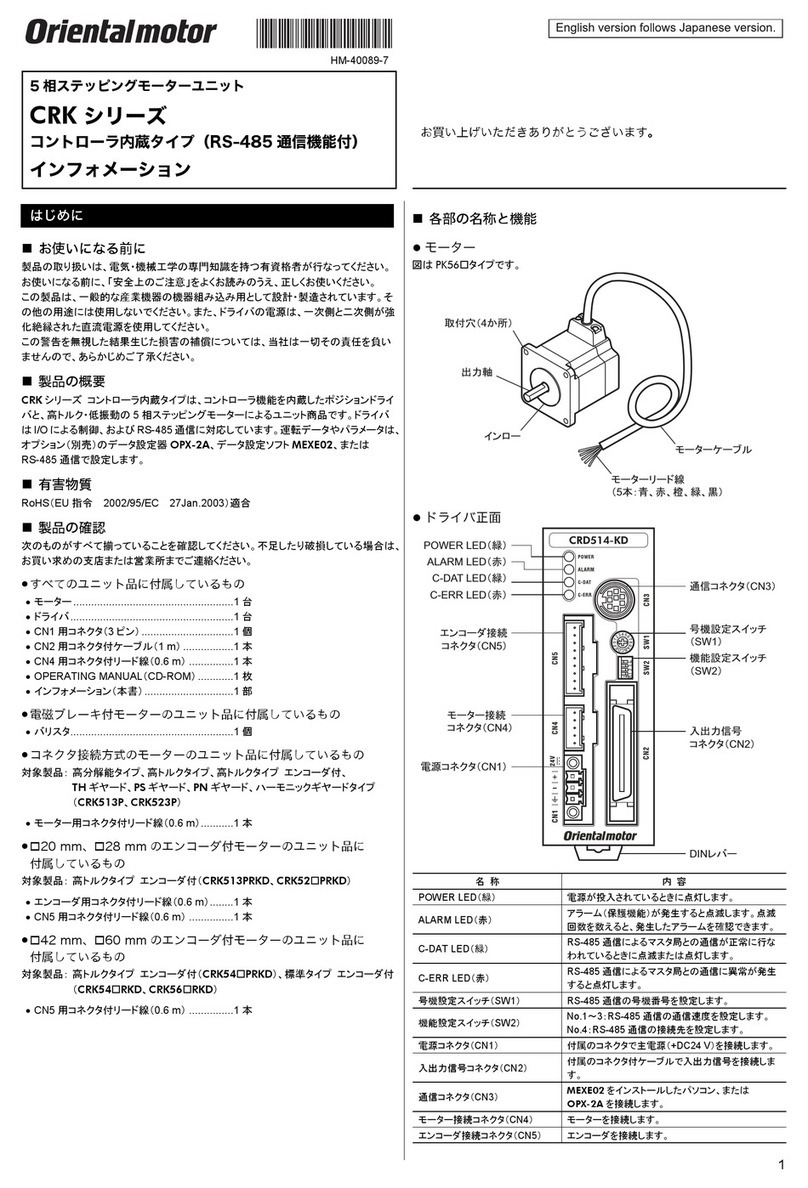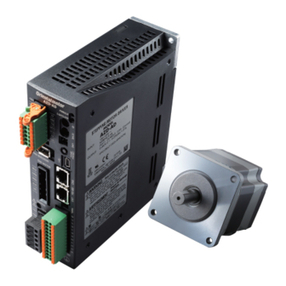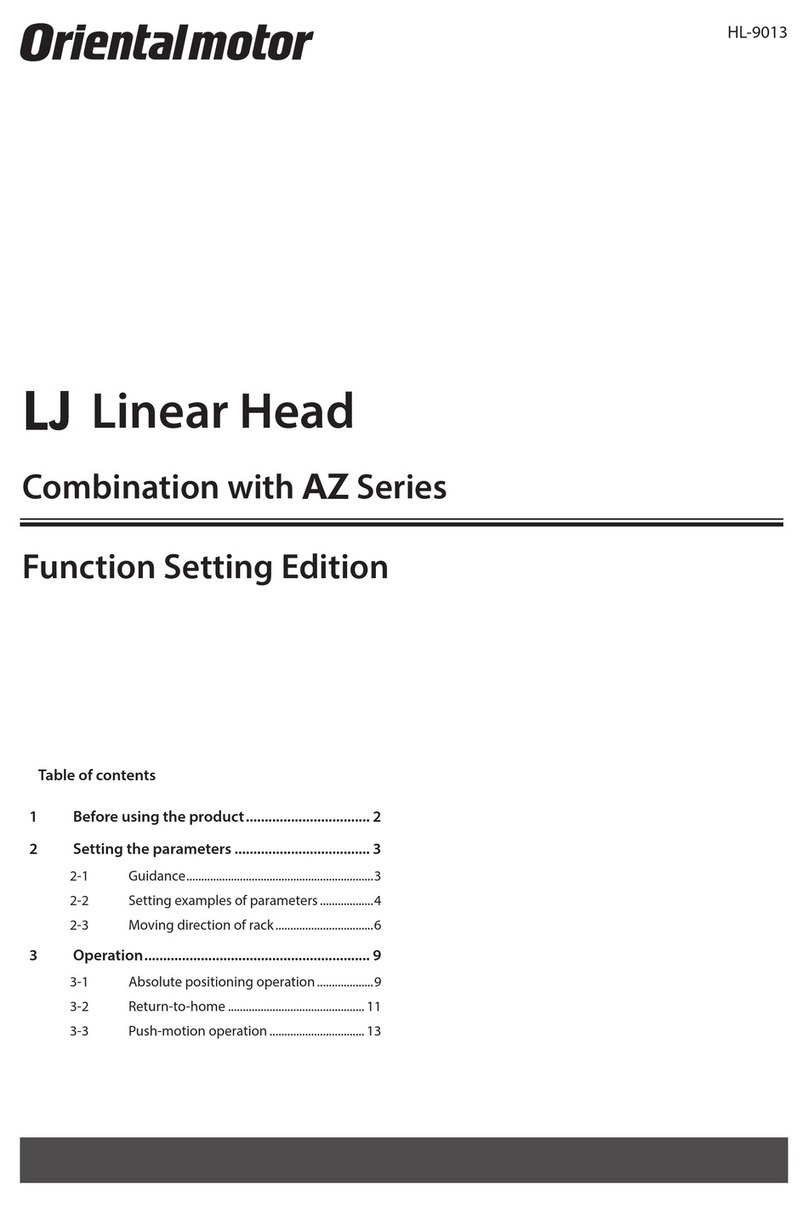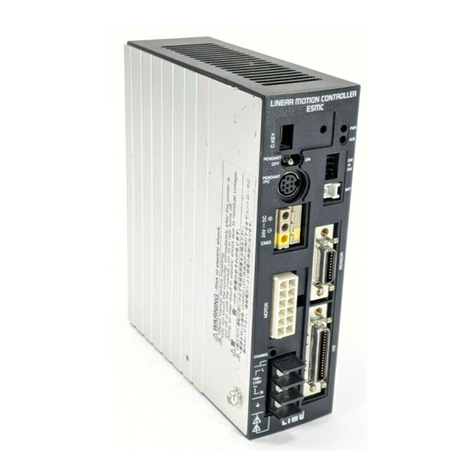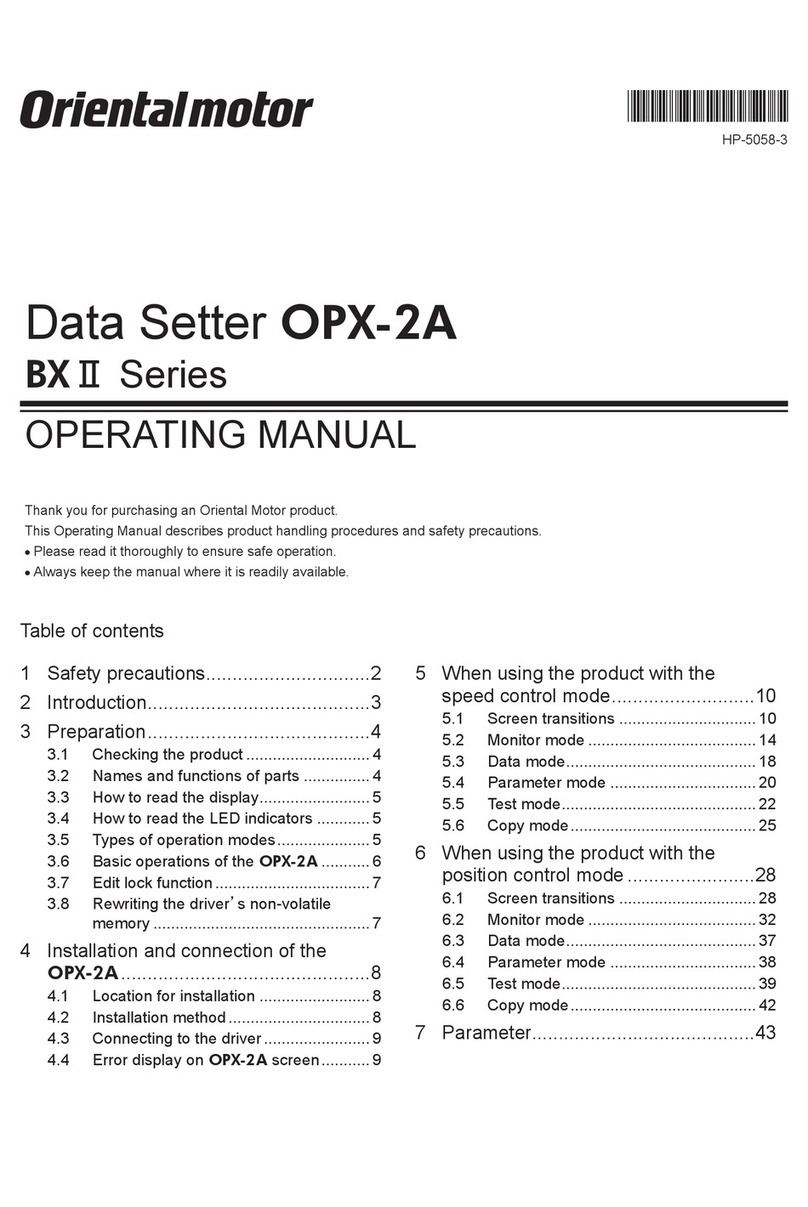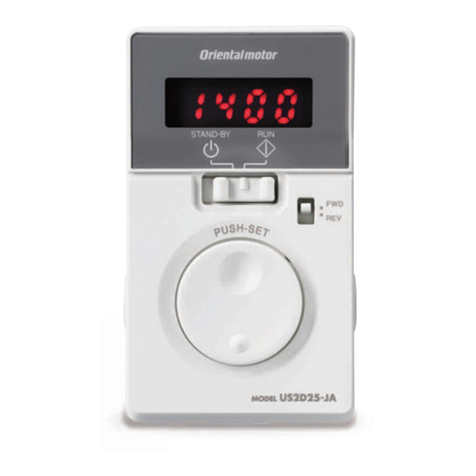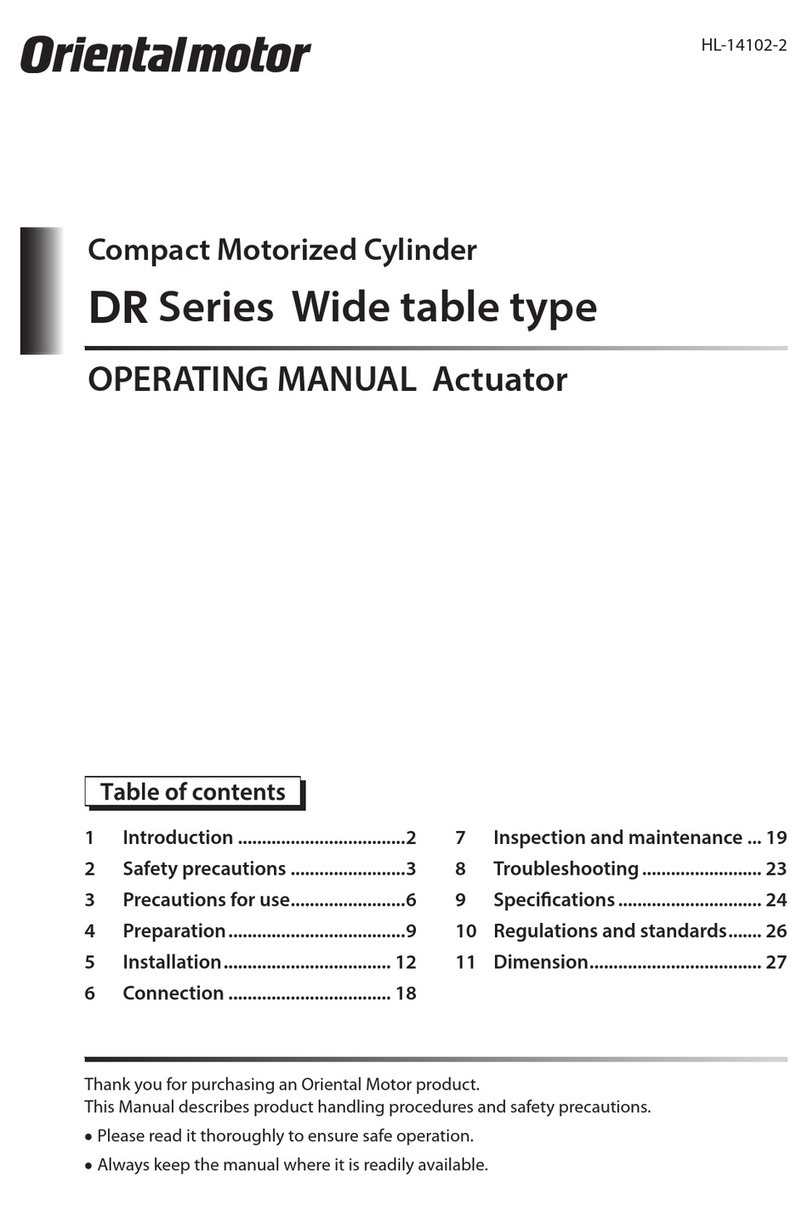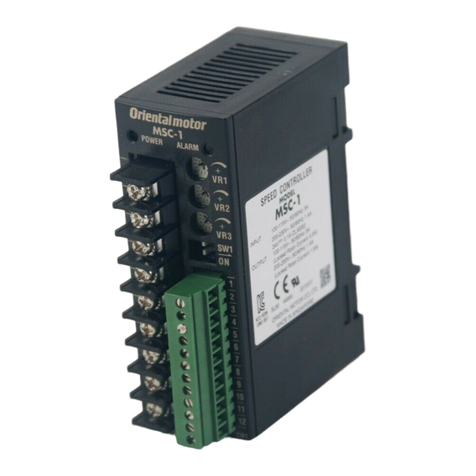
7
Precautions for use
This section covers the limitations and points to note regarding use of the DRL series actuator.
■
Maximum thrust force
Always operate the actuator under a load not
exceeding the maximum thrust force.
Operating the actuator under a load beyond the
maximum thrust force or allowing the screw shaft
to remain locked may cause damage to the motor’s
bearing (ball bearing).
When using the actuator in a lift application, operate
it under a load not exceeding the maximum vertical
load and without the application of an external force.
■
Maximum load moment
Always operate the actuator under a load moment
within the permissible value.
Operating the actuator continuously in conditions
under a load moment beyond the permissible value
may result in a malfunction or shorter service life of
the actuator.
■
Do not let the screw shaft hit the
stroke end or load
Do not let the screw shaft hit the stroke end or
equipment during operation, since such an impact
may damage the actuator. Should the screw shaft hit
the stroke end or load, retract the shaft at the
recommended starting speed.
Model
Recommended starting speed [mm/s (in/sec)]
DRL20, DRL28
0.2 (0.01)
DRL42
0.4 (0.02)
DRL60
0.8 (0.03)
■
For a lift device, provide a measure to
prevent the moving part from dropping
The actuator loses its holding brake force upon the
occurrence of a power failure or when the A.W.OFF (all
windings off) input is turned to “ON”. When the actuator
is used in a lift device such as an elevator, provide a
measure to prevent the moving parts from dropping.
■
Actuator surface temperature
Use the actuator in conditions where its surface
temperature will not exceed 90°C (194°F).
If the surface temperature of the actuator case
exceeds 90°C (194°F) due to operating conditions
(ambient temperature, operating speed, operating
duty, etc.), a damaged motor coil or shorter service
life of the bearing ( ball bearing ) may result.
■
Grease on screw shaft
Grease on the screw shaft may darken slightly
within a short time after the start of operation. This
is not a problem if there is no abnormal noise ( i.e.,
from deflection or interference ). Wipe off the dirty
grease with a rag, and apply new grease.
If the grease on the screw shaft has darkened after
the initial operation (one to three weeks), check the
accuracy of installation.
■
Measure insulation resistance
or conduct a dielectric-strength
test on actuator alone
Measuring insulation resistance or conducting
dielectric-strength test with the actuator and driver
connected may damage your product.
■
Standard type actuator
●
Provide an anti-spin mechanism
for the screw shaft
The standard type cannot be operated without an
anti-spin mechanism for the screw shaft. Always
provide an anti-spin mechanism externally to the
product. In addition, make sure the load installed to
the screw shaft is supported with a linear guide, etc.
●
Installation accuracy
When using the standard type, always install it
within the specified installation accuracy.
Low accuracy of installation may result in a
malfunctioning actuator or shorter service life of the
ball screw. Page 13
●
Stopping the screw shaft
When operating the standard type,
always provide a stroke-end
detection sensor or limit sensor
in order to prevent
the screw shaft from
hitting the stroke end
or load.
●
When a carrier guide for load is provided
When a carrier guide for load is provided, always
use the standard type. (Do not use the guide type.)
Actuator
Sensor
